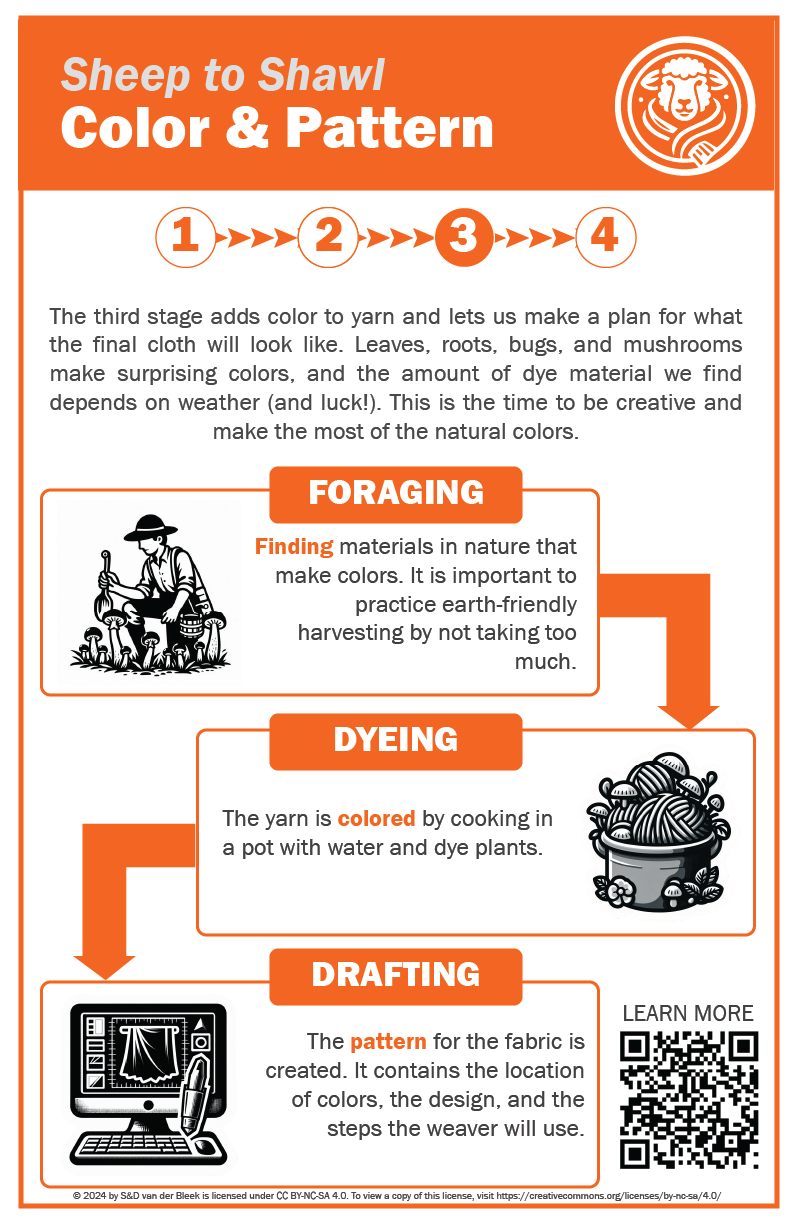Step 3: Color and Pattern

The third set of steps encompass adding color to yarn and planning what the final cloth will look like. Natural materials produce unpredictable colors, and the amount of foraged ones is determined by weather (and luck!). Flexibility and artistic skill is needed to make the most of the colors you produce.
Foraging
Many colors can be found in the world around us. Foraging is finding resources in nature, such as plants, lichens, and mushrooms. It is very important to understand the ecosystems you are foraging in, and forage ethically and sustainably.
Dyeing
Coloring yarn often involves submerging the yarn in a vat of liquid. Dyeing causes various pigments and color forming compounds to attach to the yarn, creating beautiful colors. Many things make colors, but not all of them are durable enough to be considered a good source of dye.
Drafting
Turning yarn into fabric takes a lot of planning. Once you know what colors you have, and how much of each, you can design your pattern. Drafting is laying out a plan, so that you can follow the steps and wind up with the fabric you have imagined.